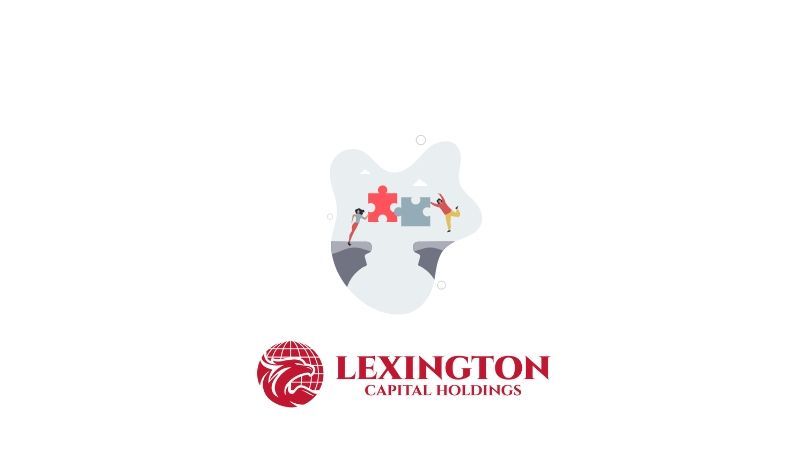Smart Finance Moves: How Accounts Receivable Financing Transforms Cash Flow
Smart Finance Moves: How Accounts Receivable Financing Transforms Cash Flow

In the dynamic landscape of business, maintaining healthy cash flow is crucial for sustained growth and operational success. One powerful tool that businesses often leverage to optimize their cash flow is Accounts Receivable Financing (ARF). This financial strategy proves to be an invaluable resource, especially for companies facing cash flow challenges. In this article, we'll explore how ARF works and delve into the ways it can significantly benefit businesses.
Understanding Accounts Receivable Financing:
Accounts Receivable Financing, also known as invoice financing or factoring, is a financial arrangement where a business sells its outstanding invoices to a third-party financial institution, known as a factor, at a discounted rate. This allows the business to receive a quick infusion of cash, typically a percentage of the total invoice value, while the factor assumes the responsibility of collecting payment from the customers.
Immediate Cash Injection:
One of the primary advantages of ARF is the swift injection of cash into the business. Instead of waiting for customers to fulfill their payment obligations, companies can access funds almost immediately after invoicing. This liquidity is particularly beneficial for covering day-to-day operational expenses, investing in growth opportunities, or seizing time-sensitive business initiatives.
Improving Working Capital:
By converting accounts receivable into immediate cash, businesses can enhance their working capital position. Working capital is the lifeblood of operations, and having readily available funds enables companies to meet short-term obligations, negotiate favorable terms with suppliers, and navigate unforeseen financial challenges. ARF provides the flexibility needed to manage cash flow effectively.
Mitigating Credit Risk:
Accounts Receivable Financing also offers a layer of protection against credit risk. When businesses sell their invoices to a factor, the factor assumes the responsibility for collecting payments from customers. This can be particularly advantageous in industries where late payments or non-payment are common, allowing businesses to offload credit risk and maintain financial stability.
Facilitating Growth:
Access to consistent and reliable cash flow empowers businesses to pursue growth opportunities with confidence. Whether it's expanding operations, investing in marketing initiatives, or hiring additional staff, ARF provides the financial foundation needed to support strategic business expansion.
Maintaining Customer Relationships:
Despite the involvement of a third-party factor, many ARF arrangements allow businesses to maintain direct communication with their customers. This ensures that customer relationships remain intact, and the financing process does not disrupt the normal course of business. The factor's role is primarily in the background, focusing on the financial aspects of the transaction.
In the ever-evolving landscape of business finance, Accounts Receivable Financing emerges as a strategic ally for companies seeking to optimize cash flow. The immediate cash injection, improved working capital, and risk mitigation capabilities of ARF make it a valuable tool for businesses looking to thrive in an increasingly competitive environment. By leveraging the power of ARF, companies can unlock new opportunities, navigate financial challenges, and propel themselves toward sustained success.

When you apply for business funding, your application goes through a critical stage—underwriting. This is where lenders evaluate risk and determine whether your business qualifies for financing, and under what terms. Understanding what underwriters look for can help you strengthen your application, avoid delays, and increase your approval odds.

Not every business enjoys a steady stream of income. For many companies—especially those in seasonal industries, contracting, or project-based work—revenue can shift dramatically from month to month. These ups and downs are normal, but they can make managing cash flow, payroll, and operating expenses challenging. At Lexington Capital Holdings, we understand that fluctuating revenue doesn’t mean instability—it just means you need the right financial tools to stay balanced and grow confidently.

The Challenge of Hyper-Growth For many startups, growth isn’t the problem—it’s managing it. Rapid scaling demands capital for hiring, marketing, technology, and operations. But too often, founders find themselves cash-strapped right when they need resources the most. Choosing the right financing strategy can be the difference between sustainable growth and burning out too soon.

When it comes to business financing, the terms you secure are just as important as the funding itself. Lower interest rates, flexible repayment schedules, and higher approval amounts can mean the difference between simply surviving and setting your business up to thrive. The good news? Business owners often have more negotiating power than they realize. At Lexington Capital Holdings, we’ve seen firsthand how preparation and strategy can help secure stronger terms. Here’s how you can do the same:

For many businesses, waiting on customer payments can feel like standing still when you’re ready to move forward. Delayed invoices, extended payment terms, or slow collections create cash flow gaps that make it harder to cover expenses, pay employees, or seize new opportunities. The truth is—even successful, profitable companies face this challenge. The key isn’t avoiding it, but managing it strategically with the right funding solutions

Securing business funding is a milestone—but the real impact comes from how you put that capital to work. Every dollar borrowed should fuel momentum, strengthen operations, and generate measurable returns. Unfortunately, too many businesses stop at “getting approved” and miss the chance to maximize their return on investment (ROI). At Lexington Capital Holdings, we believe funding isn’t just about access to capital—it’s about creating opportunity. Here’s how to ensure your financing delivers the highest ROI:

In today’s fast-paced business environment, standing out from the competition requires more than just great products and services—it takes strategy, timing, and smart financial decisions. One of the most overlooked tools in building and maintaining a competitive advantage is business financing. When leveraged correctly, financing doesn’t just help you “get by”; it can actually position your business to outpace competitors and capture new opportunities.

In business, surprises aren’t a matter of if—they’re a matter of when. Whether it’s a sudden equipment breakdown, an unexpected dip in sales, or a market shift that requires quick adaptation, unforeseen expenses can test even the most successful companies. The difference between thriving and struggling often comes down to how well you’ve prepared.

When most business owners hear the word debt, it sparks feelings of stress or risk. But here’s the truth—debt isn’t always a bad thing. In fact, when managed strategically, debt can become one of the most powerful tools to grow, stabilize, and scale your business. At Lexington Capital Holdings, we work with business owners every day who are navigating this very question: Is taking on debt the right move for me? Let’s break down the difference between “good” and “bad” debt so you can make informed financial decisions.

In today’s business world, financing options are everywhere—but choosing the right path can feel overwhelming. From traditional bank loans to alternative lending solutions, the fine print and fast-changing requirements often leave business owners spending more time deciphering funding terms than actually running their businesses. That’s where the value of a dedicated funding advisor truly shines. At Lexington Capital Holdings, we’ve seen firsthand how personalized guidance can transform the funding experience for business owners of all sizes.

